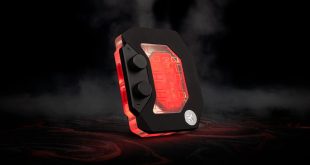To test the Arctic Silentium T11 we are going to use an AMD Athlon X4 635 based system as we feel it reflects what those who purchase a case like this are likely to use. It is cooled by a Noctua C12P SE14 cooler with Arctic Cooling MX-3 thermal paste applied.
Test System
Motherboard: ASRock 890GX Extreme4
CPU: AMD Athlon II X4 635 2.9GHz
Memory: Crucial Ballistix 4GB (2x 2GB) DDR3
PSU: Corsair HX850W
Chassis: Arctic Cooling Silentium T11
Graphics Card: Zotac GeForce GTX470
Cooler: Noctua C12P SE14
Thermal Paste: Arctic Cooling MX-3
Hard Drive: Samsung SpinPoint F3 1TB (7200rpm)
Windows 7 Home Premium 64 Bit
Furmark
Prime95 (64-bit)
Thermal Performance
The airflow setup of the T11 is like nothing we've seen before in any case and is illustrated in the image above. We're interested to see how this unique setup affects the system temperatures.
On the whole, the temperatures we achieved at stock settings are impressive. The most surprising result is with the Zotac GTX470 GPU that has hit 92c in every other system we've tested it in. We put this down the the rather unusual air hood which channels cool air directly to the GPU. When the system was overclocked, though, it did hit 92c where it remained due to its predefined fan profiles.
The most disappointing result of all is with the HC01-TC hard drive cooler which let our Samsung SpinPoint F3 hard drive reach a rather toasty 38c! In every other system we've tested this hard drive in it never really strays from the mid-high 20s which makes us seriously question the cooler's effectiveness.
The motherboard temperatures are also a little high for our liking but this is a likely consequence of having no dedicated exhaust fan in the system.
Acoustic Performance
We take the issue of noise very seriously at KitGuru and this is why we have built a special home brew system as a reference point when we test noise levels of various components. Why do this? Well this means we can eliminate secondary noise pollution in the test room and concentrate on components we are testing. It also brings us slightly closer to industry standards, such as DIN 45635.
Today to test the chassis we have taken it into our acoustics room environment and have set our Digital Sound Level Meter SL-824 one meter away from the case
As this can be a little confusing for people, here are various dBa ratings in with real world situations to help describe the various levels.
KitGuru noise guide
10dBA – Normal Breathing/Rustling Leaves
20-25dBA – Whisper
30dBA – High Quality Computer fan
40dBA – A Bubbling Brook, or a Refridgerator
50dBA – Normal Conversation
60dBA – Laughter
70dBA – Vacuum Cleaner or Hairdryer
80dBA – City Traffic or a Garbage Disposal
90dBA – Motorcycle or Lawnmower
100dBA – MP3 player at maximum output
110dBA – Orchestra
120dBA – Front row rock concert/Jet Engine
130dBA – Threshold of Pain
140dBA – Military Jet takeoff/Gunshot (close range)
160dBA – Instant Perforation of eardrum
We replaced the graphics card with a passively cooled HIS Radeon HD 5550 for the noise level testing.
The high-quality fans that Arctic fit as standard make this a very quiet system indeed.
 KitGuru KitGuru.net – Tech News | Hardware News | Hardware Reviews | IOS | Mobile | Gaming | Graphics Cards
KitGuru KitGuru.net – Tech News | Hardware News | Hardware Reviews | IOS | Mobile | Gaming | Graphics Cards







